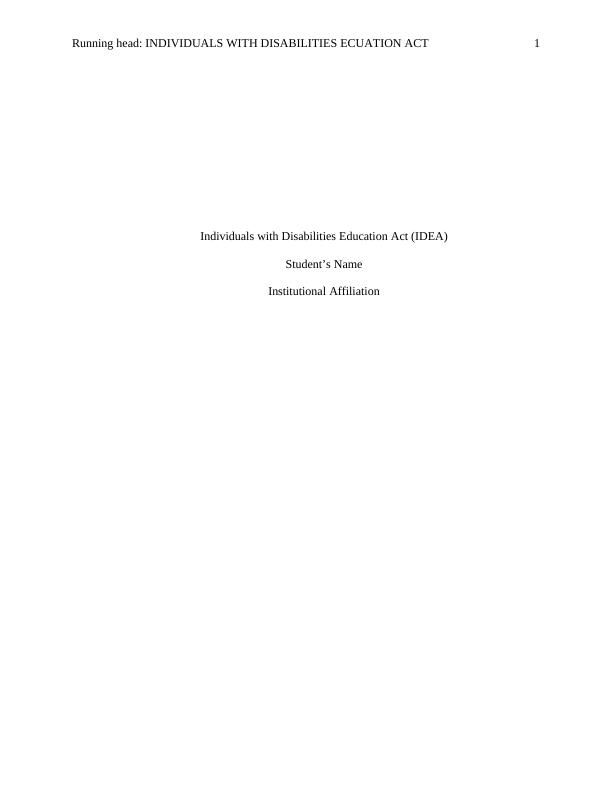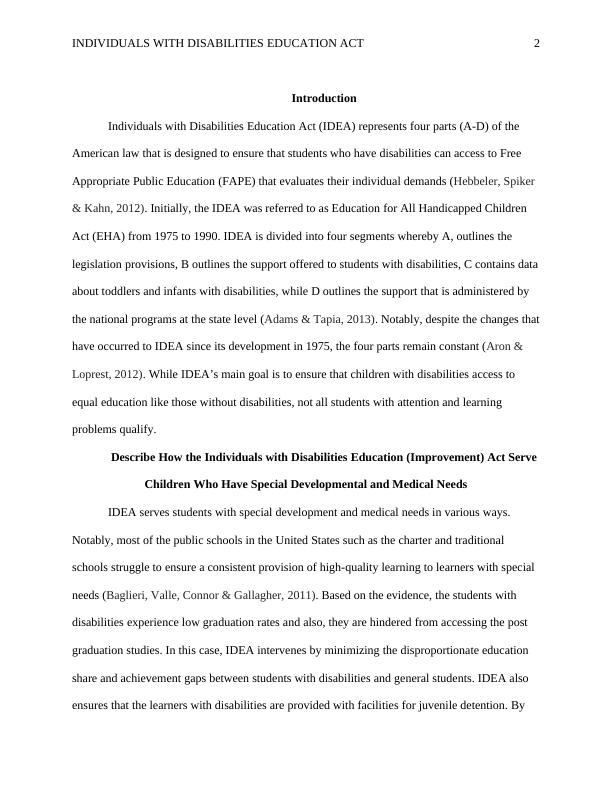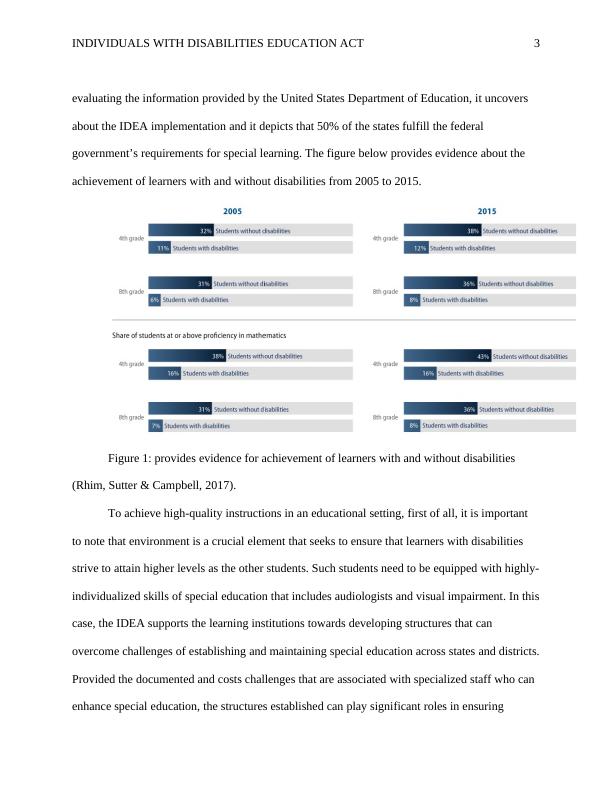Individuals with Disabilities Education Act (IDEA)
10 Pages2440 Words99 Views
Added on 2023-01-23
About This Document
The Individuals with Disabilities Education Act (IDEA) ensures that students with disabilities have access to Free Appropriate Public Education (FAPE). This article explores the different parts of IDEA and how it serves students with special developmental and medical needs. It also discusses special medical conditions and management strategies, as well as recommendations for improving support for students with disabilities.
Individuals with Disabilities Education Act (IDEA)
Added on 2023-01-23
ShareRelated Documents
End of preview
Want to access all the pages? Upload your documents or become a member.
Public Law Reflection on P.L. 94-482 and Board of Education of the Hendrick Hudson Central School District v Rowley
|4
|717
|427
EDUC 2301 Exceptional Learner Assignment
|5
|1135
|256
Education Law
|6
|1220
|147
Early Childhood Advocacy Power Point Presentation 2022
|18
|1487
|35
Inclusive Education in Early Childhood Settings
|14
|3896
|129
Introduction to Response to Intervention (RTI) for New Educators
|20
|769
|265



